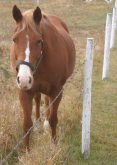University of Manitoba researchers are asking farmers and other rural residents to fill out a survey that arrives in prairie mailboxes this week about how they survived the BSE crisis.
While much has been written about BSE and how the border closure affected the industry, there has been little study done on how its discovery in a northern Alberta cow affected individual farms and their rural communities, said Troy Stozek, who is using the survey as part of his master’s thesis in the U of M’s environment and geography department.
Read Also

Beef check-off collection system aligns across the country
A single and aligned check-off collection system based on where producers live makes the system equal said Chad Ross, Saskatchewan Cattle Association chair.
“There’s a complete lack of information regarding the differences and impact on producers across the Prairies,” said Stozek.
The eight-page survey will be sent to 10,000 rural mailboxes March 6-10 as unaddressed advertising mail. By sending it to farmers in all three provinces, Stozek is hoping to create a clearer picture of how producers in each province dealt with the border closure and its fallout.
“We’re also asking them how they responded to the BSE crisis and what factors enabled them to adapt or not adapt,” said Stozek, who grew up in Dauphin, Man.
“There’s a lot of people saying the industry hasn’t changed and everything has gone back to normal, as it was before the border closed. We’re trying to gain a sense of what producers and rural folk are saying about the future and if this has the potential to happen all over again and if they’re prepared.”
Stozek said the survey also looks at differences in the structures of rural communities and attempts to determine the key factors that helped them cope. There are also questions about access to off-farm jobs and how distance to slaughter facilities affected producers’ ability to cope with the crisis that cost them billions of dollars in lost income.
“We want to try and gain a sense of differences across the Prairies of how they were affected and why or why not.”
Stozek said the survey and follow-up interviews and focus groups this summer will also allow farmers and other rural residents to tell their own stories.
“There isn’t a lot of understanding of what the farm level or community level effects were.”
Farmers’ stories will also be recorded on video for a future documentary on the BSE crisis. If the survey discovers a good-news story, he added, it too will be featured.
Stephane McLachlan, associate professor in the faculty of environment, earth and resources, said the survey will provide background for the documentary. In the past the university has done similar work documenting the risks and benefits of genetically modified crops in the video Seeds of Change that has been shown around the world.
“The ultimate goal is to increase the visibility of the plight of producers,” McLachlan said.
















